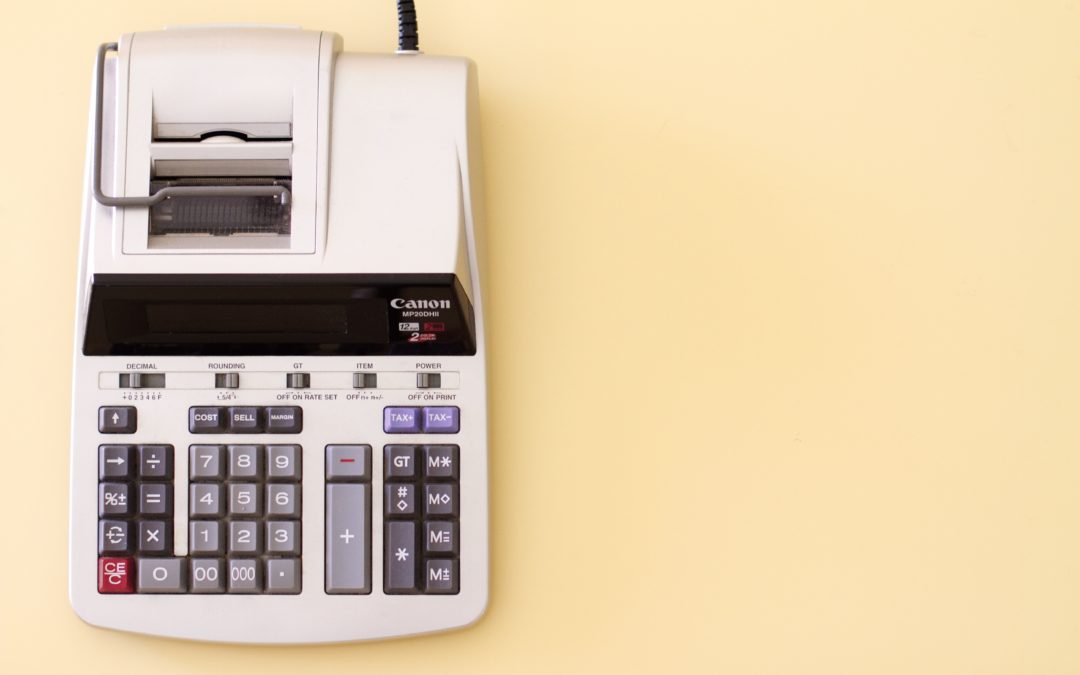
by George Astudillo | Feb 15, 2017 | Financial, Management Systems, Planning
If the cost of owning an investment property is more than the income you receive, what’s the point?
I mean sure, Negative Gearing allows you to offset those losses against your other income, but even on the highest tax scale you’re still losing some of your hard earned cash (at least on paper).
So, let’s talk depreciation.
A property with a large depreciation allowance allows you to have a positively geared cash flow yet be negatively geared for tax purposes.
Let me explain further.
The Australian Taxation Office regards depreciating assets as a long-term cost of ownership.
In most properties there are many items that will, over time, deteriorate – i.e. the value of those items will depreciate. The ATO has worked out what items you are allowed to claim as depreciation as a deduction over specified period of time. There are two main types of depreciation claims: those for capital works and those for depreciating assets.
- Capital works are improvements to the property that are of a structural nature and fixed to the property. For example, kitchen and bathroom renovations, paving and driveways, built-in cupboards, clothes lines and fences are regarded as capital items (but note that not all capital works are recognised and advice should be taken here). Capital works include the initial cost of building, but not the cost of the land. When buying into any brand new building, you are entitled to claim all or a portion of the construction costs.
- Equipment and appliances are depreciating assets and include such items as kitchen appliances, carpets and other floor coverings, window finishes, air-conditioning units, alarms and pool equipment.
When you buy a brand new property, a list of these costs, known as a depreciation schedule, should be available from the property developer; this identifies the cost of every item that can be claimed. On older properties, there may still be items that you can claim depreciation on.
You can commission a quantity surveyor who specialises in preparing depreciation schedules to draw up a schedule for you.
A claim for depreciation is treated as an expense and is included as a cost of ownership that is deducted from the rental income. Negative gearing legislation allows any loss made on an investment property to be applied against other income.
If depreciation is the cause of the loss, then it seems you can have your cake and eat it too.
For a better understanding of negative gearing see our previous blog “What’s This Thing Called Negative Gearing?”
About Us
George Astudillo is the founder of Property Quarters, an agency that values communication and great relationships with its landlords.
George now has more than 30 years in real estate, including 15 years as the owner of a national real estate franchise. He’s also an accredited auctioneer and is the author of “The Landlord Mindset”, a book with his best tips to help landlords look after their investments. His book has been quoted in the SMH, The Huffington Post and The Age.
As the founder of Property Quarters, George takes great care in looking after his landlord’s investments. Having seen it all and worked with may landlords and tenants, he’s a strong mediator and negotiator and knows how to navigate through property legislation.
George is trusted by his landlords to advise on the financial management of their investments. He’s put in place proven processes to ensure each property he looks after is managed effectively to retain its value, quality tenants and rental income.
If you’re looking for a property manager who thinks like a landlord and whose business is built on tested processes, contact us by clicking HERE.
Copyright © 2022, www.propertyquarters.com.au

by George Astudillo | Nov 10, 2016 | Financial, Landlord mindset, Planning
There’s been a lot of talk recently in the media about negative gearing.
Bill wants it out, Malcolm says it stays. So what is negative gearing and what does it mean to the average investor?
Let’s start with some basics.
Without any borrowings you would buy a property and the rents received (income), would be more than enough to pay for the expenses (outgoings). Whatever income is left over would be added to your personal income and taxed accordingly. The value of the property would, hopefully, grow over time and you become more financially wealthy. So if over the period you own the property the property market increases in value by 50% you now own a property that is worth 150% of the price you paid.
That increase is called capital growth. The growth generally affects all properties equally, as a percentage. So it makes sense that if you buy a more expensive property then that 50% increase will mean more dollars.
To buy a more expensive property you will need to borrow money from the bank or other lending institution to be able to afford the purchase price. The amount of borrowings as compared to the purchase price is what is referred to as gearing.
When you borrow to buy an investment property the interest you pay for the loan becomes part of your expenses. A positively geared property is one where the total amount of expenses including the interest on your borrowings is less than the total income you receive from the tenant, so you have money left over. A neutrally geared property is where the income and expenses are relative equal.
Negative gearing occurs when you have borrowed so much to buy the property that the interest on the loan has pushed your expenses beyond the income you receive in the way of rent. This means that you are owning the property at a loss.
Investors use negative gearing on the expectation that the capital growth will be far greater in the long run than the losses they incur in owning the property. This seems like a great strategy in a rising market but what happens when the market is stagnant or even falling?
The main benefit from negative gearing comes from the use of depreciation. When you have a property with a large depreciation allowance you can have a positively geared cash flow yet be negatively geared for tax purposes. For a closer look at depreciation see our blog “Depreciation- The Key to Negative Gearing”
Does investing in property take you out of your comfort zone? See our blog “What is Your Risk Tolerance?”
Are you taking advantage of depreciation and negative gearing?
About Us
George Astudillo is the founder of Property Quarters, an agency that values communication and great relationships with its landlords.
George now has more than 30 years in real estate, including 15 years as the owner of a national real estate franchise. He’s also an accredited auctioneer and is the author of “The Landlord Mindset”, a book with his best tips to help landlords look after their investments. His book has been quoted in the SMH, The Huffington Post and The Age.
As the founder of Property Quarters, George takes great care in looking after his landlord’s investments. Having seen it all and worked with may landlords and tenants, he’s a strong mediator and negotiator and knows how to navigate through property legislation.
George is trusted by his landlords to advise on the financial management of their investments. He’s put in place proven processes to ensure each property he looks after is managed effectively to retain its value, quality tenants and rental income.
If you’re looking for a property manager who thinks like a landlord and whose business is built on tested processes, contact us by clicking HERE.
Copyright © 2022, www.propertyquarters.com.au

by George Astudillo | Aug 21, 2016 | Financial, Planning
The ‘Great Australian Dream’ is to own your own property, but is it wiser to rent?
Many of us have a deep affinity with home ownership. There’s the idea of the ‘great Australian dream’ some of us have drummed into us from a young age.
In some countries, renting is preferable to owning your own home, but Aussies tend to hold the concept of home ownership in high regard…
Read the full Huffington Post Australia interview HERE.

Copyright © 2016, www.propertyquarters.com.au

by George Astudillo | Jul 6, 2016 | Financial, Planning
“Buying an investment property is an exciting experience. But, before you set out to become a landlord, you should consider asking your accountant for their valuable expertise.”
It’s always nice to be quoted.
Read the full Huffington Post Australia interview HERE.

Copyright © 2016, www.propertyquarters.com.au

by George Astudillo | Mar 25, 2016 | Financial, Landlord mindset, Planning
Owning an investment property is no different than owning a business, you must have a financial plan.
Many investors live month to month, using the rent to pay the mortgage and expenses. In some months there’s money left over and in some months there’s not enough. This type of arrangement adds an enormous amount of stress.
Part of our management services is to prepare a complete plan and budget for every landlord.
By knowing what your expenses are on any given month, you can prepare yourself for difficult times and even the unexpected.
The expenses
o Council rates
o Water rates
o Strata levies
o Land tax
o Management fees
o Postage
o Leasing fees |
o Lease preparation fees
o Marketing expenses
o Insurance
o Smoke alarm inspection
o Repairs
o Maintenance |
To work out your own budget:
- Make a list of your expected expenses and the amounts.
- Determine when they are due, are they weekly, monthly, quarterly, half yearly or annual?
- Print the table found here and add the expenses
- Total the expenses for each month.
- Add your expected income, or rent.
- Subtract the total expenses from the rent each month to determine your expected monthly profit.
TIP: Allow some funds for the unexpected and remember to compare this budget with actual costs to make sure you are still on track to your goals.
Download a free Budget Template in our Free Downloads page
About Us
George Astudillo is the founder of Property Quarters, an agency that values communication and great relationships with its landlords.
George now has more than 30 years in real estate, including 15 years as the owner of a national real estate franchise. He’s also an accredited auctioneer and is the author of “The Landlord Mindset”, a book with his best tips to help landlords look after their investments. His book has been quoted in the SMH, The Huffington Post and The Age.
As the founder of Property Quarters, George takes great care in looking after his landlord’s investments. Having seen it all and worked with may landlords and tenants, he’s a strong mediator and negotiator and knows how to navigate through property legislation.
George is trusted by his landlords to advise on the financial management of their investments. He’s put in place proven processes to ensure each property he looks after is managed effectively to retain its value, quality tenants and rental income.
If you’re looking for a property manager who thinks like a landlord and whose business is built on tested processes, contact us by clicking HERE.
Copyright © 2022, www.propertyquarters.com.au

by George Astudillo | Mar 18, 2016 | Landlord mindset, Management Systems, Planning
With over 25 years in real estate I have seen the good, the bad and the outright ugly.
Good property management should be more than just collecting rent and attending repairs. As a residential property investor, I need to know that my property is in great condition, my future security depends on it. So does your future.
There has never been a better time to be a landlord. Technology has provided us with all the information we will ever need as well as software applications that handle complicated number crunching and calendars to remind us of important events.
All we need now is the confidence to be a great landlord. And confidence comes from knowledge, the knowledge of what needs to be done and the knowledge that if anything ever goes wrong, we have the solution.
That’s where this blog comes in. I believe to be a successful investor you need to have clarity on 3 key areas that will affect the result you achieve from investing in property. You can learn more about the 3 keys here.
In the meantime feel free to leave a message to say hello or if you have any questions.
George Astudillo







